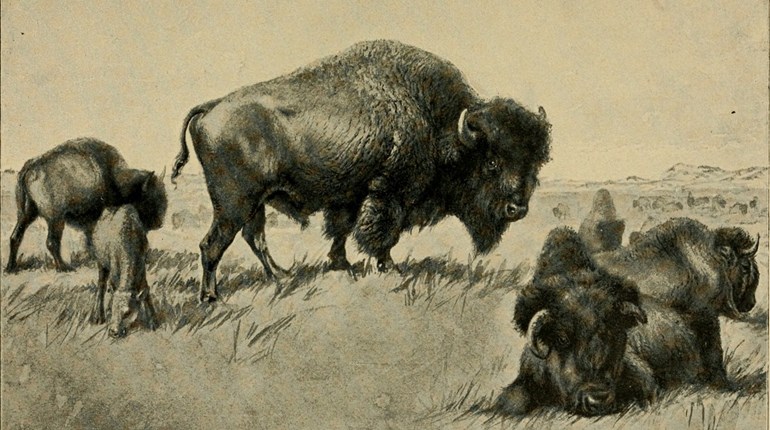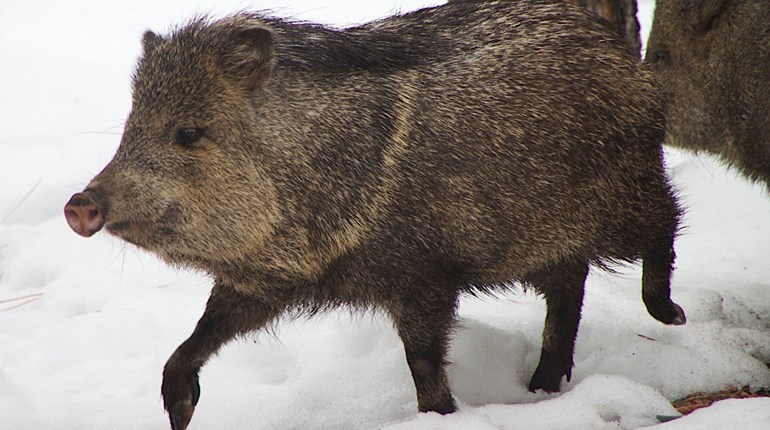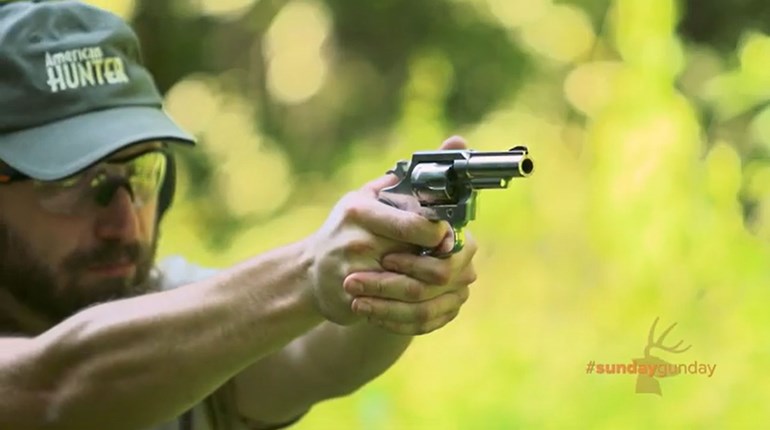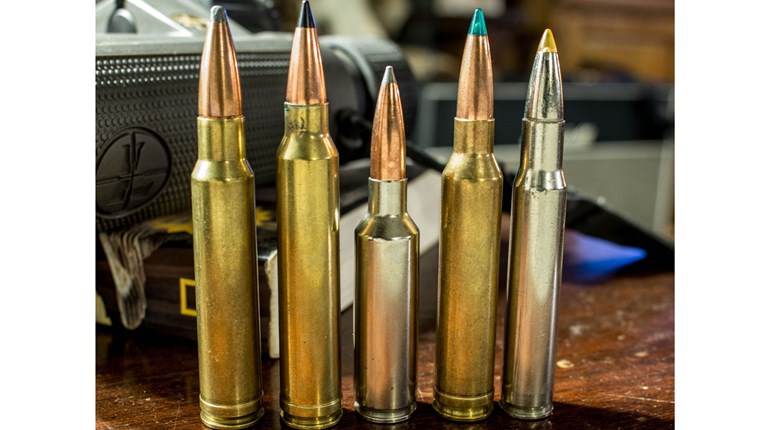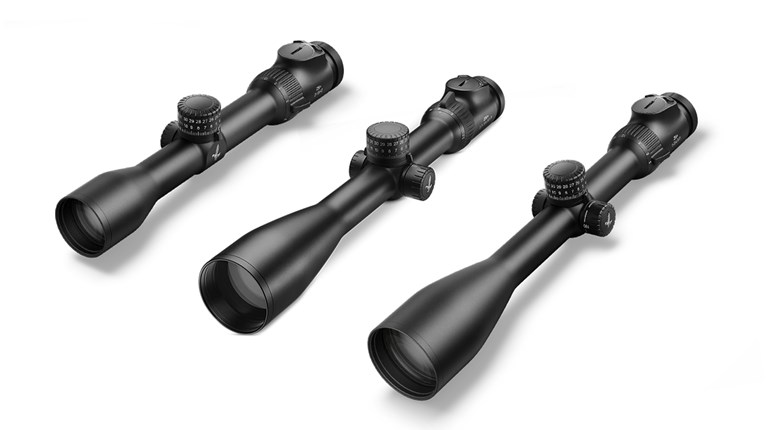Across a fire, under the unfamiliar stars of the Southern Hemisphere, Hans “Scruffy” Vermaak is telling us about a lion that tried to kill him. He was in the open back of a truck when the cat came out of the bush. He knew the lion was wounded. A client had done that. But he didn’t know it was right there, targeting him. Lions do that, he says. When they come, lions pick a target and kill that unfortunate someone; whereas leopards, well, they’d rather just attack everybody.
He has us all leaning forward, riding each syllable of the close-call. But right in that boisterous moment, for some reason known only to the subconscious, it occurs to me that Africa’s wildlife has actually become dependent on the swashbuckling role played by professional hunters (PH) like Scruffy.
“The lion came right up for me. I can still see his yellow eyes locked onto mine. I shouldered my rifle as I fell backward into the truck,” says Scruffy as he raises his arms. “The gun went off, smashing a bullet through the lion’s brain. He fell back into the bush.”
After a pause he exclaims, “God I love lions.”
All along I’m thinking, This guy guides hunters to lions, kudu and Cape buffalo, but he is clearly in love with this wildlife. The part he plays, the PH, is iconic and has been portrayed by Clark Gable and Stewart Granger. Today, however, the part a PH plays is often misunderstood, even demonized. So much so, in fact, it’s in danger of being lost. If lost, then all this is … .
As I follow this politically incorrect line of thought on our first night in the African bush, a young apprentice, a teenager who longs to be a PH, puts a small shovel of red coals under my chair. Scruffy nods at the embers and says, “That’s an African seat warmer.”
I think, bloody brilliant idea, and ask Scruffy if the African lion has a future.“Responsible hunting can protect them,” he says. “It is in some areas. Without hunting and the money it brings it’s difficult to convince those who own cattle or goats to tolerate lions in rural Africa. It’s a complicated problem I’m very involved in solving.”
He compares the plight of the wild lion to the white and black rhino and explains how hunting helped spread rhinos back across private lands in southern Africa. When ranchers were permitted to sell a few hunts, the economic incentive prompted many of them to establish rhino populations. Soon species many thought would become extinct in the wild made glorious, market-driven comebacks.
This is the basic idea Ben Carter, executive director of Dallas Safari Club (DSC), invited me and Andrew McKean, the editor of Outdoor Life, to grasp on this trip across southern Africa. Still, Ben wasn’t saying much. He was letting us see for ourselves.
Part I: Cecil Rhodes’ Legacy
A few hours after letting the fire die to red coals we’re up with the rising sun. As we stow our guns in two waiting trucks I ask Scruffy how the hell he got such a nickname.
He tells me that when he was a young lad he was always hanging out with the Zulu boys. One day he was so scruffy looking when he came back from tracking game that his father—credited as being one of the first PHs in South Africa—called him “Scruffy.” The nickname stuck.
His assistant PH comes up so I ask him about his name. It’s Mphaleni, but everyone calls him “Patches” and I want to know why. The answer takes some teasing out, but it seems that years ago some American, after days of watching him track, said, “You move like an Apache.” Not knowing what an Apache is and English not being his first language, he thought he’d been nicknamed “Patches,” and so he was.
They’re a profound team. Scruffy says he could speak Zulu before English. Patches, meanwhile, is a Zulu who started with Scruffy as a tracker. Scruffy saw potential in Patches—the guy can hunt—and convinced him to become a PH. Patches went to PH school, but he struggled with the written portion of the course (he has very little formal schooling) so Scruffy got him a tutor. After a lot of work Patches became one of the few black PHs in South Africa. Scruffy keeps telling us how proud he is of Patches for becoming this new example, which makes me realize the archetype of the PH is evolving. In Africa, much the same as it has been depicted on the silver screen, blacks have always been gun bearers and trackers. Patches, however, is a full PH.
I climb in the back of a truck beside Patches. Soon we’re driving along red sand roads that  crisscross the Rooipoort Nature Reserve, a 100,000-acre private property founded in 1893. We begin this adventure at Rooipoort for a reason. When we left the pavement the evening before we passed the “Shooting Box,” a Victorian home with all the extravagant trimmings money could buy in 1898. Cecil Rhodes had this home dragged on ox carts some 500 miles from Cape Town after it was shipped as a kit from England. Rhodes founded the diamond company De Beers. He’s South Africa’s Andrew Carnegie. He earned money to do what he wanted, and he wanted a private hunting preserve.
crisscross the Rooipoort Nature Reserve, a 100,000-acre private property founded in 1893. We begin this adventure at Rooipoort for a reason. When we left the pavement the evening before we passed the “Shooting Box,” a Victorian home with all the extravagant trimmings money could buy in 1898. Cecil Rhodes had this home dragged on ox carts some 500 miles from Cape Town after it was shipped as a kit from England. Rhodes founded the diamond company De Beers. He’s South Africa’s Andrew Carnegie. He earned money to do what he wanted, and he wanted a private hunting preserve.
Rhodes had the Shooting Box pulled to this rural area because this is where the game was still abundant at the very end of the 19th century. Hearing this, some modern observers might imagine Rhodes and his pals knocking over the last of dwindling antelope populations for sport with big cigars in their grinning mouths. They’d be right about the image and wrong about the results. Because Rhodes wanted game to hunt, his property protected and saved then-disappearing species.
According to De Beers, this property is now administered with a “progressive conservation philosophy [that] aims to demonstrate that wildlife has more than just an aesthetic value.” What they’re referring to is the fact that Rooipoort has been the largest private supplier of wildlife to reserves in southern Africa. The red hartebeest and black wildebeest, to name two species, were virtually extinct elsewhere in southern Africa in the mid-20th century. By trapping and transferring animals from this property—herds protected by the self-interest of hunters—areas around southern Africa were able to begin new herds.
Later, when more ranchers realized they could make a dandy profit from wildlife, they reintroduced species and protected their wild resources like they do their cattle. That’s the selfish secret behind why PHs are critical to protecting and enhancing these many storied wildlife populations. As Adam Smith once wrote, altruism isn’t as trustworthy as self-interest.
After a morning seeing herds of wildebeest, springbok, impala and so much more, Patches spots a good gemsbok far off on a rocky ridge. We go on foot with backs bent and circle to keep our scent from his nose. We slip by little white-and-tan springboks in the soft light of a late afternoon. We stalk so close we can see the gemsbok’s straight, long horns standing above brush 50 feet away, but it’s too thick for a clean shot.
The next day Scuffy, Ben and I go looking for zebra. As we drive he shows us a leopard kill stuffed in the branches of a tree. He says on a smile, “Leopard are making a comeback here.” But just then his cell phone rings. He answers and speaks Afrikaans, but then hangs up and explains. “I’m the president of the Professional Hunters’ Association of South Africa. This makes me a target of anti-hunting groups—most of their members are from Europe and America. One of my employees was just telling me about some new attack in the media.”
He shrugs it off and only a few minutes later, far off in the bush, we see zebra stripes. We begin a long stalk together on a herd of zebra under a high hot sun. We crawl through yellow grass and use brush for cover to get close to a bedded herd. Finally I shoot and a zebra jumps and goes down.
As a truck with skinners who would butcher the meat approaches, Scruffy says, “You killed the old stallion from the herd. That’s as it should be. What hunters kill doesn’t deplete these managed populations. Hunters kill a very small percentage of the game. But because they’re willing to spend a lot for this experience,” he adds, “this wildlife exists in plenty.”
The skinning truck pulls up and men climb out. Scruffy points at them and says, “I hire trackers, skinners, camp help and a lot more. My economic imprint is a lot bigger than someone running a photo safari business. And my trackers know right away when a poacher has entered the property. Hell, they might be able to indentify the bloke by his footprints.”
Later that day, on the way out of the De Beers property, we stop by an ancient waterhole to see Bushmen rock carvings. Long ago Bushmen chiseled images of rhino, blesbok, elephant and the rest into flat rocks as they waited for game to come to the waterhole. They didn’t, however, carve themselves or their bows and arrows. I found this to be a deep expression of their love for the game. Hunters have always been here and have always cherished the wildlife. We were natural. We were and are part of the natural process, and nature benefits when we understand our role and embrace that responsibility.
Soon we were off again, this time to Namibia where we would feed a village. (For more on Hans “Scruffy” Vermaak’s safari business, Coenraad Vermaak Safaris, go to cvsafaris.co.za)
Part II: Namibia
Marina Lamprecht of Hunters Namibia Safaris meets us at the Windhoek airport, in the capital of Namibia. Her smile is infectious. She is clearly enjoying the part she and her husband, Joof, created in the safari business. We follow her out into the sun and are soon driving out of the city. The city is clean and modern. Namibia is known for being a safe and officious country. It was a German colony. The country around Windhoek looks like West Texas’ dry, brushy expanses and escarpments. We see baboons and warthogs along the roadside.
We arrive at a group of thatched-roofed buildings that seem to have naturally grown from a rock outcropping in the camel thorn forest. Inside are posh rooms filled with African art and taxidermy in such an overwhelming collage we have to pause and look closely to see everything. Our private rooms face waterholes. We sit on patios watching warthogs, springboks and impalas drinking.
“When we started building this outfitting company many of the cattle ranchers told us we’d be out of business in a season,” says Marina. “But in the years since, thanks to travelling hunters, we’ve bought many of those ranchers out and let our now 80 square miles return to its natural state. We tell hunters they’ll see a minimum of 500 animals per day.”
She wasn’t exaggerating; in fact, I’d like to tell you about the four gemsboks we stalk and  kill the next day with Johnnie, another black PH whose charm is only surpassed by his ability to hunt. But instead I have to tell you about Otjivero, a village I’ll never forget.
kill the next day with Johnnie, another black PH whose charm is only surpassed by his ability to hunt. But instead I have to tell you about Otjivero, a village I’ll never forget.
Otjivero is a shantytown of little crudely built huts with corrugated metal roofs. There are goats in dirt front yards and chickens pecking in the shade. The only running water and electricity is in a clinic and school. We drive down sand roads through the village and stop in the shade of a tree beside cinderblock walls of a one-story school. It’s almost lunchtime and a man is boiling meat donated daily by Hunters Namibia Safaris. He’s cooking the meat in a large metal caldron that Marina provided.
Soon more than 300 boys and girls begin coming from their homes for lunch. They were dismissed from school to go home and get their bowls and some corn meal provided by the Namibian government. Every child is dressed in clean, pressed clothing. The girls are in olive skirts and the boys in matching pants. They wear windbreakers, sweaters and long-sleeve shirts. They likely only have a few sets of clothes but all of them are as unsullied as children in their Sunday best. Their smiles are bright and they’re curious about us.
They line up by class. Meat is ladled into their bowls one at a time by Hoxobab, a teacher wearing a dark suit with a red shirt and tie. They’re soon all eating wild game meat. While taking photos I look over the tops of hundreds of students eating meat at Ben and Marina talking to the school’s principal. I wonder how this can be politically incorrect.
“When I saw this place I knew we had to do something. Here in Namibia I can sell the meat, but I want these kids to have protein,” says Marina.
She explains she has had to stop giving them meat twice. When her trackers found poachers setting snares on their property and chasing game with dogs she cut off the meat supply. “A real African negotiation ensued,” says Marina. “We met under a shade tree and all parties aired their grievances. Before long they acquiesced, figured out who the culprits were and the poaching stopped.”
She says the wild game populations she’s helped grow wouldn’t last if people were allowed to illegally kill the wild game for the market. This human dilemma is known in economics as the “tragedy of the commons.” When the use of a shared resource isn’t controlled with the future in mind by an individual or regulatory agency no one has the incentive to preserve and protect it and everyone has the incentive to take as much as they can before someone else does.
On our last evening in Namibia we left Marina and stayed the night with Volker Grellmann, the director of the Eagle Rock Professional Hunting Academy Namibia. Volker is a bear of a German. Stories roll naturally from his chest about Namibia’s past and present. There isn’t space here to introduce him as he should be, but it was profound to hear him talk about how he helped bring the conservation model to hundreds of ranches in Namibia. In the late 1960s he started a booking agency to book hunters into local ranches. The hunters would typically stay with ranching families and hunt plains game. “Ranchers were shocked by what they could make from a few visiting hunters. A few tried to give me back the money, saying it was too much,” says Volker. “Before long landowners started doing all they could to protect and build game herds. They no longer saw kudus and gemsboks as competition for their cattle. They began seeing them as commodities that needed to be managed. Other parts of Africa took notice.”
We left Volker and all he had to say too soon and flew east to the other side of the continent where another part of the story awaited. (For more on Hunters Namibia Safaris go to huntersnamibia.com)
Part III: PH School
We land near South Africa’s Kruger National Park. Theresa Sowry, the chief executive officer of the Southern Africa Wildlife College, meets us at this little airport surrounded by game fences in the Limpopo province of South Africa.
The drive to the school would appear to be a made-up, African parody if it was a scene in a  Hollywood production. On the way down a winding road we stop to watch an elephant rub its forehead on a tree not 20 feet away. We watch impala cross the road and see other wildlife. We cross an electrified cattle guard (to stop the elephants) and note the prison-like electric fence around the school (to keep out lions and more) and stop on the grounds of the Southern African Wildlife College. That night we hear hyenas laughing near the fences. In the morning we wake to students in the ranger portion of the school singing as they do calisthenics. “They can harmonize,” says Theresa when we all comment how moved we were by the melody.
Hollywood production. On the way down a winding road we stop to watch an elephant rub its forehead on a tree not 20 feet away. We watch impala cross the road and see other wildlife. We cross an electrified cattle guard (to stop the elephants) and note the prison-like electric fence around the school (to keep out lions and more) and stop on the grounds of the Southern African Wildlife College. That night we hear hyenas laughing near the fences. In the morning we wake to students in the ranger portion of the school singing as they do calisthenics. “They can harmonize,” says Theresa when we all comment how moved we were by the melody.
There are 10 students earning a two-year degree (18 months at the school and a six-month apprenticeship) that teaches students to be PHs—eight out of the 10 students are black and one is a woman. The conception of a PH being a “white hunter” is evolving wonderfully into a role for anyone driven to be, as Theresa says, “the eyes and ears of conservation.”
Much of the funding for this PH program comes from DSC. Their head professor, a retired game ranger, shows us their difficult curriculum. We learn that outside the classroom these PH students are required to make hundreds of successful stalks on various species. Each is even blindfolded and left sitting near a waterhole frequented by lions and elephants. Someone is watching, of course, but they all say they get this feeling of total vulnerability and that soon they’re smelling and hearing things they never could before. The PH students take us for a hike, guns loaded, into the bush in hopes of seeing rhino and elephant up close. We don’t, but we see these young students moving confidently in the bush.
We cap the trip with a sundowner. We climb off an all-terrain bus, ride to a wild spot and open a few beers as the sun sets into Kruger. As we talk three bull elephants begin feeding up a grassy hillside toward us.
Richard Sowry, a section ranger for Kruger, is standing beside me talking about rhino poachers. He says, “Hunting is a conservation tool that has helped rhinos in many areas outside South Africa’s national parks. Hunting is actually why rhino populations have done so well in recent times. Continuing to realize value from rhino, through conservation initiatives such as hunting, photographic safaris and game sales, is essential to the long-term survival of rhino in Africa.”
So here is a ranger, a man on the front lines of protecting rhinos from poachers, arguing that hunting has helped and can continue to benefit rhinos. This is like hearing a police officer explain the practical side of law enforcement away from the spin of politicians. Sowry then explains that poachers often come in from Mozambique. They find a rhino and stay near it until near dark. Then they shoot. By the time rangers or the army can get mobilized it’s dark. The poachers then slip back across the 225-mile-long border under the cover of darkness with a horn worth perhaps $50,000 per kilogram in China and Vietnam. As of last November, poachers had killed an estimated 860 black and white rhinos in South Africa in 2013 alone. There are perhaps 8,000 white rhinos and 800 black rhinos in Kruger.
Richard pauses. The closest elephant, now about 30 yards away, has stopped and become rigid. Suddenly the elephant swings his head and then his body toward us and charges through a small tree. Richard shouts at the bull and the elephant stops at 20 yards. The bull holds its head as high as he can to look even bigger as his eyeballs strain to look down at puny us, but then he turns and saunters off shaking his great tusked head.
Richard lets out a long breath and on the end of it says, “He was just letting us know he’s as big and wild as Africa.”
I glance at Richard. The sun is falling softly into Kruger behind the elephants. I take a deep breath myself and ask him, “Can Africa keep its wild parts?”
“Only if we do,” Richard replies.













